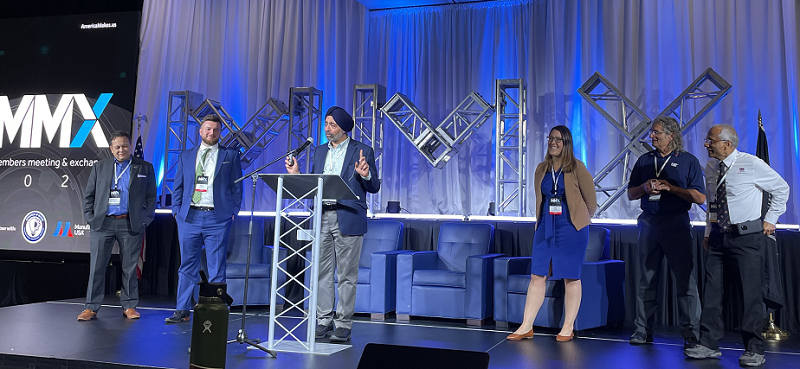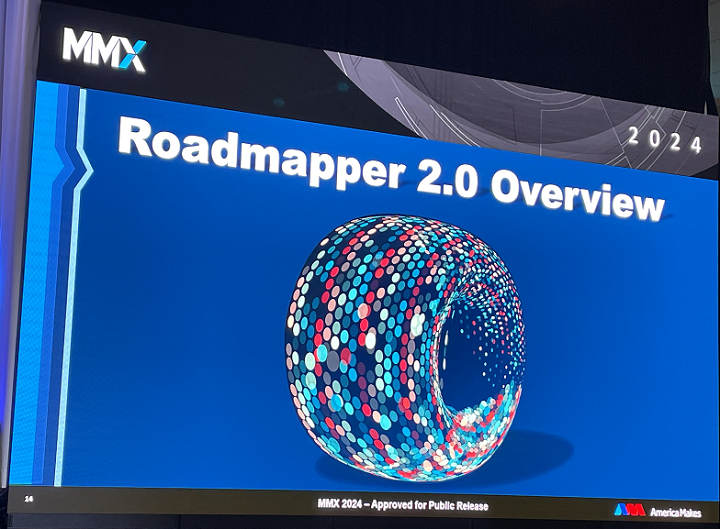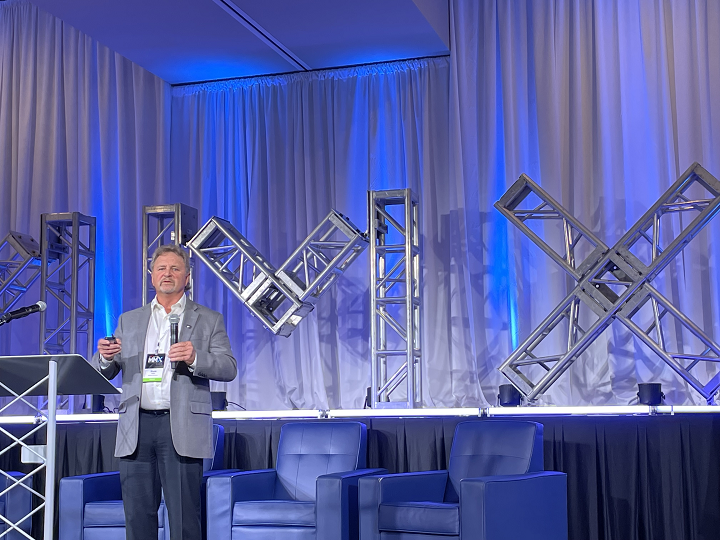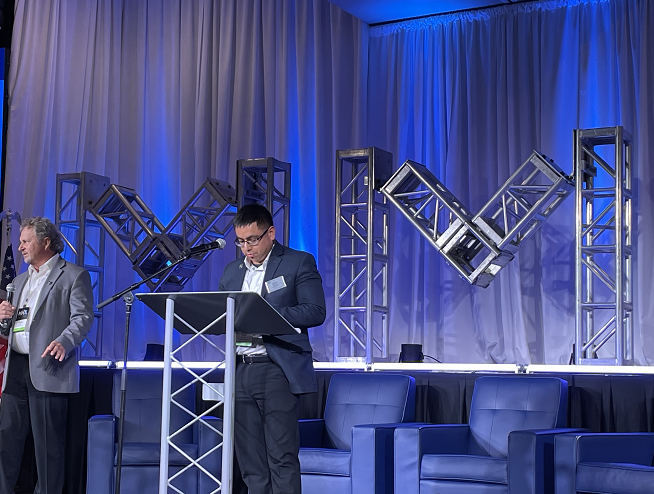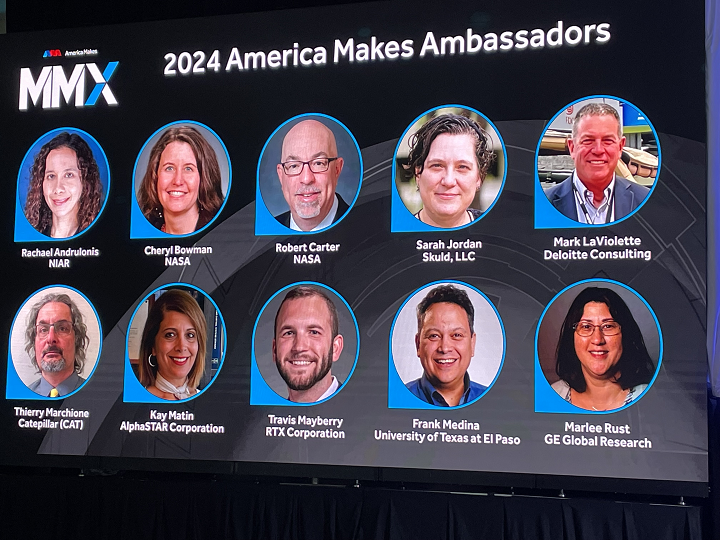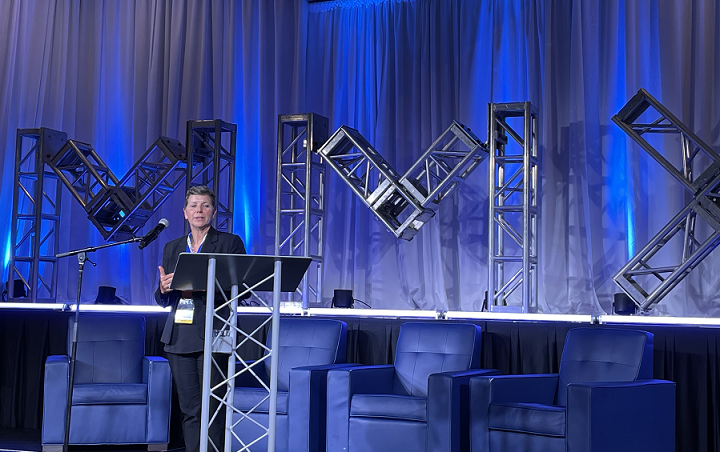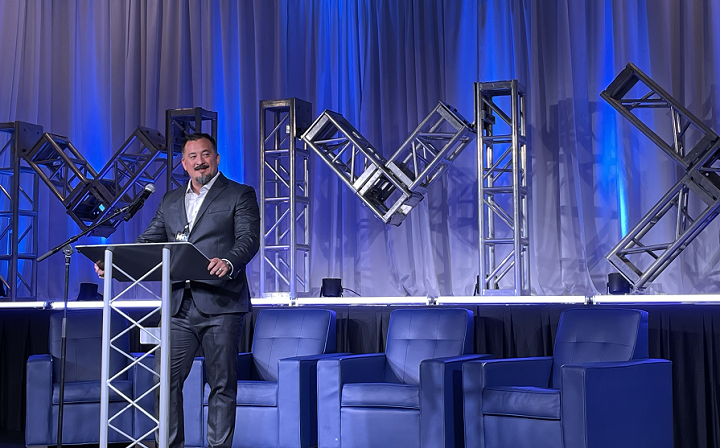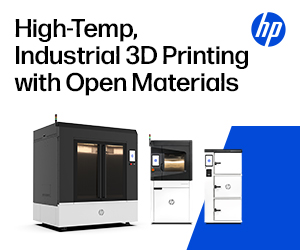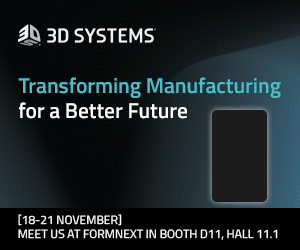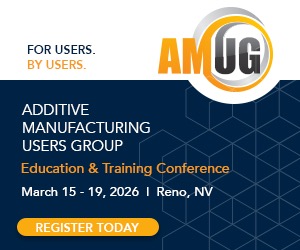At the recent Annual Members Meeting and Exchange (MMX), Ohio-based America Makes, the nation’s first Manufacturing Innovation Institute (MII), provided updates on the organization and its operation, as well as its three strategic focus areas. Attendees also learned about ongoing projects and enjoyed presentations about important topics.
Roadmap Advisory Group Update
Prabhjot Singh, PhD, Director of the Additive Manufacturing Process and Capability Center at RTX, and chair of the Roadmap Advisory Group (RMAG), said the group is “derived from industry and academia large and small,” with excellent support from America Makes management.
“All swim lanes have Critical Tech Elements, and we’ve been working on refreshing the requirements, and that’s complete,” he announced.
The RMAG will soon be available for members to view online.
RMAG co-chair Andrew Thompson, Manager of Additive Manufacturing Engineering at Northrop Grumman, said the Design Swim Lane Working Group (WG) is working on multiple projects, such as Surface Finish Design Guide for AM Heat Exchangers, Metal AM and Topology Optimization, and more. UTEP’s Frank Medina said the Process Swim Lane WG reviewed project deliverables to roadmap requirements, and revamped its four Critical Tech Elements (CTEs), which are now:
- Machine Efficiency & Process Innovation
- Compositional Control thru Process Enhancements
- Process Control
- Hybrid Approaches Combining Capabilities
Professor Joy Gockel, with the Colorado University of Mines, said the Materials Swim Lane WG’s goal for 2024 was to foster “rich discussions around additive manufacturing needs implementation, and get everyone’s perspective on the needs and how to incorporate them.” Recent topics included the effect of feedstock on properties and microstructure tailoring through advanced processing. Caterpillar’s Thierry Marchione said in 2023, the Value Chain Swim Lane WG was “a catch-all.” So they’ve been reformatting their meetings and refocusing on some smaller projects, like advanced in-situ sensing and detection.
Dr. Anil Chaudhary, Applied Optimization Inc., said the AM Genome Swim Lane WG has three CTEs—Benchmark Validation Use Cases, Model Assisted Property Prediction, and Physics-based Modeling and Simulation—each with its own set of requirements. They’ve been working to update those requirements, and also did some work for the Data Management Advisory Group (DMAG).
“Why did we work on DMAG? You need data to validate the physics-based modeling. Where do you get it? It’s within America Makes, within the many projects completed by partners. But we need to create data that can be disseminated.”
CORE Update and Introduction to Roadmapper 2.0
At last year’s MMX, everyone learned about CORE, a new online platform to help members identify, access, and utilize the intellectual capital assets of the institute’s projects in a secure fashion. At MMX 2024, the National Center for Defense Manufacturing and Machining (NCDMM) introduced the enhanced features of CORE, and also announced its latest tool for sharing digital roadmaps, Roadmapper 2.0, which complements CORE.
Jason Saly, Information Technology and Cloud Services Director for NCDMM, went over some of the new CORE features, including a mobile-friendly version for enhanced usability. There’s also a new custom reporting feature with an advanced filtering system, which enables all members to create more detailed reports.
“Our IT team has also streamlined the process for members to access, edit, and contribute to project deliverables,” Saly said. “We’ve also introduced the capability to upload artifacts and link them directly to existing deliverables from other projects, a function previously unavailable.”
Several enhancements are already planned for the future, including the ability to “follow” certain projects so you never miss an update, and a generative AI search functionality that can “uncover relationships and connect dots that human searchers might miss.” Plus, CORE will soon be able to support large file uploads so they can be searched, just like with PDF, PowerPoint, and Word.
The powerful Roadmapper 2.0 tool was introduced to members and partners at MMX 2024. It enables organizations and companies to work together in a user-friendly environment, identify needs, and monitor progress in real time.
“Roadmapper is about going from Point A to Point B, but focusing on what happens in between,” explained Joey DiNinno, IT Security Specialist for NCDMM. “Collaboration between you and other companies is instantaneous, nothing is missed, everyone gets the same notes and deliverables. No disconnect.”
It also has direct CORE integration, “so it’s a single sign-on,” which makes things much easier. All the information for swim lanes, CTEs, and request mapping can be pulled right into Roadmapper 2.0, thanks to a new API.
“We developed Roadmapper 2.0 from scratch, using modern web technologies and user interface elements. Its lightning-fast interface, integrated with Member Portal credentials, brings us closer to our vision of a unified web platform for all NCDMM and America Makes tools,” DiNinno said.
Project 5556 Review: Techno-Economic Analysis of Metal Powder Bed AM
Last summer, America Makes and NCDMM announced a new project call, funded by the Office of the Under Secretary of Defense, Research and Engineering Manufacturing Technology Office (OUSD (R&E)) and the Air Force Research Laboratory (AFRL), that offered $11.7 million in funding opportunities. The “Improvements in Manufacturing Productivity via Additive Capabilities and Techno-Economic Analysis” (IMPACT) Project Call was spread across ten different topic areas, all related to incorporating AM into conventional large-scale manufacturing. IMPACT Topic Area 9 is a “Powder AM techno-economic analysis” for the “Identifying and Disseminating the Impact of Strategic R&D to Scale Powder Bed AM Technology” focus area, and MMX attendees heard a review of Project 5556.
“The purpose of this America Makes project is to provide the Air Force with information that can help to direct future project funding that provides the highest return on investment,” explained Shane Collins, Tech Fellow and Senior Associate Consultant, Wohlers Associates, powered by ASTM International.
David Paredes, ASTM International Additive Manufacturing R&D Engineer, said they’d broken the Topic Area into nine tasks:
- Review past roadmaps for lessons learned – completed
- Analysis of PBF-EB systems configurations – completed
- Interview PFB-EB system manufacturers for future trends, specifically for productivity increases – completed
- Analysis of PBF-EB systems with new companies entering the market – completed
- Analysis of binder jetting opportunities with DoD – completed
- Conduct surveys of metal powder bed AM experts for future trends
- Host a two-day workshop on techno-economic analysis of metal powder bed AM
- Provide reports and conclusions
In reviewing past roadmaps, they found several common themes that “still haven’t been realized,” like rapid qualification of new machines, materials, geometries, etc.
“If metal powder bed additive manufacturing was cheaper than traditional manufacturing, the risks would be managed and impediments to adoption would be overcome by programs looking to reduce costs and be more competitive,” Paredes said.
There’s been a shift in how metal PBF printers are categorized, so the team analyzed costs of one-laser machines vs. two-laser and four-laser, etc. along with beam width, optimized powder, and more. The potential exists to “achieve 50 cents per cubic meter, which is significant.”
Paredes and Collins said we need to move from our current model to an updated one, starting with identifying part families for metal PBF before buying a printer, and qualifying the process, rather than looking for parts that fit it.
“We’re in the constant mode of looking for the holy grail, and parts that really make sense, but we need to look at it differently.”
Ambassador and Distinguished Collaborator Awards
The Ambassador Award Program recognizes those who continually demonstrate “outstanding dedication to advancing America Makes and its mission.” This year’s Ambassadors, who received their awards at MMX, are:
- Rachael Andrulonis, Director of Advanced Materials Research, National Institute for Aviation Research (NIAR)
- Cheryl Bowman, Chief, High Temperature& Smart Alloys Branch, NASA Glenn Research Center
- Robert Carter, Deputy Chief, Materials & Structures Division, NASA Glenn Research Center
- Sarah Jordan, CEO, Skuld, LLC
- Mark LaViolette, Managing Director, Deloitte Consulting
- Thierry Marchione, Laser Engineering Specialist, Caterpillar (CAT)
- Kay Matin, President, AlphaSTAR Corporation
- Travis Mayberry, Additive Manufacturing Lead, RTX Corporation
- Frank Medina, Associate Professor/Director of Technology & Engagement, University of Texas at El Paso
- Marlee Rust, Business Development Manager, General Electric Global Research
Mark Benedict, PhD, Senior Scientist, Convergent Manufacturing, AFRL, was presented with the 2024 Distinguished Collaborator Award at MMX. Winners of this award work to grow collaborative relationships with government, industry, and academia. Benedict was recognized for “outstanding leadership and unwavering dedication” to advancing technologies and innovation in the AM industry, as well as his many contributions to the institute.
Earlier, Benedict presented a keynote on “The Need for Convergent Manufacturing,” which he described as the integration of a cooperative manufacturing process, materials agility, information technology, and human-machine teaming. That’s where the “real value will occur.”
“At AFRL, we’re engaged with the stakeholders constantly – the requirements holders and end users, design analysis, manufacturing and test, and materials and processing. Each one “knows” what additive is missing. It’s an amazing reach to get from one silo to the other. That’s the challenge of where we’re at in additive manufacturing, trying to bridge those gaps through convergent manufacturing,” Benedict said.
“I’ve been amazed by the progress made in the past decade. Multi-materials, large-scale metal 3D printed parts, human-machine learning and machine-machine learning—real progress has been made in all of these.”
The Future of AM
In addition to the program updates, about two dozen other speakers presented at MMX 2024, starting with Terry Wohlers, Head of Advisory Services & Market Intelligence, Wohlers Associates, powered by ASTM International, who delivered the opening keynote on “The Future of Additive Manufacturing.” His underlying message was that applications will drive the growth of our industry, and he shared some data from Wohlers Report 2024 that showed some of these applications. Together, end-use parts and functional prototypes made up 56.3% of a chart showing popular AM applications.
“We don’t want ‘show and tell’ parts, but real, rigorous parts,” he said.
Wohlers also said developments in materials and process are “what will move the needle.” He noted Elementum 3D’s A6061-RAM2 alloy, which was used by Purdue University students to 3D print a rocket chamber, as well as the work being done by 6K Additive to recycle metal products and make high-quality AM powders, and the 2024 Cadillac Celestiq with over 100 3D printed parts. He also mentioned that the impact of AM’s carbon footprint is getting more attention, which “will probably only magnify over the next decade,” and that for the U.S. to continue to drive additive on a global stage, we should “keep an eye on China,” as there’s increased AM growth in the country—illustrated by the 42 Chinese companies that exhibited at RAPID 2024.
Advanced Materials in the DoD
Aisha Haynes, PhD, ST, Principal Director for Advanced Materials at the Office of the Under Secretary of Defense, discussed the DoD’s strategy for advanced materials, which “are the backbone for everything we provide the warfighter.” These materials are the “high-performing ones with superior properties for specialized applications,” such as superalloys and ceramics. The DoD’s major focus areas for advanced materials science and technology (S&T) include force protection, platforms and weapons technologies, and material readiness and affordability.
“Materials don’t stand alone, manufacturing is what allows us to deliver these capabilities. This fundamental relationship is often undervalued, because it’s so ingrained in our processes. To meet demands, advanced materials are the how, and additive manufacturing determines the when,” she said.
“I personally believe additive will be the gamechanger for advanced materials, to scale them when we need them. So I’m happy and excited to be in this community.”
Small-Medium Manufacturers & SBIR/STTR
On day 1 of MMX, Senthil Arul, PhD, R&D Program Manager for the Defense Logistics Agency (DLA), shared how small-medium manufacturers can work with the DLA, while on the second day, Vyshi Suntharalingam, PhD, MBA, Chief Technology & Engineering Officer at the DoD Office of Strategic Capital (OSC), discussed how they can work to support the DoD. Arul said the DLA’s critical capability of Digital-Business Transformation is an important one for the agency, which supports all of America’s armed forces and manages multiple supply chains. In 2023 alone, the DLA provided more than $47.1 billion in goods.
“It’s a gamut of opportunities on supply chain and event forecasting sides. That’s what you should focus on as a small business,” he said.
The Office of Small Business Programs can help businesses get started with the DLA, and Arul reminded attendees that available funding sources for small businesses are Small Business Innovation Programs (SBIP), Small Business Innovation Research (SBIR), the Rapid Innovation Fund (RIF), and Small Business Technology Transfer (STTR).

Vyshi Suntharalingam, PhD, MBA, Chief Technology & Engineering Officer at the DoD Office of Strategic Capital (OSC)
The OSC works to attract private capital to national security priorities and scale investment in critical technologies, like advanced materials, hypersonics, biotechnology, and others. But Suntharalingam explained that these technologies are often “insufficiently capitalized” to support our nation’s security, which is why it’s important for the office to attend events like MMX and gain a better understanding of what small and medium businesses need.
“The OSC is not an acquisition department…we’re not an innovation organization. It’s a lending and not a spending organization,” she said. “We can start to develop terms for analysis for what makes a good investment for the DoD. That’s part of why we’re here. These are taxpayer dollars we’re using to finance this lending.”
She said that one of the most important things these businesses can do is talk to their representatives in Congress, and “keep them informed about what you’re trying to do.”
Dr. Suntharalingam was followed by Barbara Ewing, the CEO of the Youngstown Business Incubator (YBI), a founding member of America Makes. Its incubation model is geared towards advanced manufacturing, with additive as its core strength.
“If there is one challenge that our early-stage and small, medium, and even large businesses face, it’s a lack of investment dollars,” Ewing said. “Some of the industry acquisitions happening are foreign companies, and they’re great partners, but now we’re at their mercy. To rebuild the U.S. manufacturing supply chain, we have to figure out how to really invest in our own. We need not just money, but smart money, and most investors aren’t willing to take the time to learn about the technology.”
Ewing also said there are “no good mechanisms” with which to educate investors, and that large OEMs and the DoD fail to see “the power of small.” The work that America Makes is doing nationally is a big help, but Ewing says more is needed on a local level, like what Neighborhood 91 is doing.
“There were 42 Chinese companies at RAPID, and if that doesn’t send chills down your spine, it should,” she continued.
“The U.S. government has, of course, made investments in additive manufacturing, but I don’t think it rivals what China is investing. There are SBIRs and other options out there, I’m not discounting them, but it doesn’t seem like we’re on a level playing field.”
Luckily, YBI is always working with America Makes and its members to connect small and medium businesses with helpful resources.
Lawrence John, PhD, Industrial Base Systems Engineer and Castings & Forgings Lead, OASD for Industrial Based Policy, OUSD for Acquisition and Sustainment, echoed some of Ewing’s thoughts during his presentation on the IBAS Castings and Forgings Program.
“We’re not on the front end anymore,” he said about the value chain. “We’ve basically outsourced the technology to make things. Metrology and testing we can do, but we don’t have the people to do the work. We can make titanium, but we can’t qualify it, and that’s a serious problem for the industry. It’s worse for you guys because your process is different, so people don’t know how to inspect it, and they don’t trust it, so if they find any little thing wrong, they’ll say, nope, too much risk!”
He shared that C&F is focusing on continuing strategy refinement, metalworking infrastructure, workforce, and upstream supply chain, and that for those who are interested in contributing to this important work, “upcoming proposal calls are a way you can do that.” These calls will come from NCDMM, so stay tuned!
Joe Compton, SBIR/STTR Execution Chief for AFWERX, talked about “How to Engage with the DoD SBIR/STTR Programs,” which were set up by Congress to “stimulate technological innovation and support scientific excellence.” There are seven OSD organizations that currently utilize funding for SBIR/STTR topics, including the Strategic Capabilities Office (SCO), and Compton explained that STTRs aren’t as competitive as SBIRs, and are “a great entryway,” but a research institute does have to be a partner on the initiative.
Previously, seasoned experts had an advantage when checking for this funding, as small businesses may not have a dedicated marketing or business development person who knew when to look for the updated solicitation schedules. But OSD has changed this to a submission opportunity at the beginning of each month, so the barrier to entry is lower. Compton told attendees that they can search for previous topics, submit new proposals, and ask questions on the Defense SBIR/STTR Innovation Portal (DISP), so they can “get the right investments to the right technologies.”
A Bright Future
In these, and other MMX presentations, there were calls to action, new and interesting points of view, and helpful information that should get us closer to our goals. Outlooks in our industry can seem bleak sometimes, but there are people, and agencies, who want to help. David Beck, PhD, Principal, Space Industrial Base Office, U.S. Space Force, said as much multiple times during the event, and acknowledged that while additive manufacturing is “a lot of effort, our office knows that it supports the rapid production of space components. It directly benefits our ability to rapidly deliver and accommodate the changing warfighter requirements.” If that’s not a ringing endorsement of AM, I don’t know what is.
The work isn’t over, but it’s clear we’re getting somewhere.
Subscribe to Our Email Newsletter
Stay up-to-date on all the latest news from the 3D printing industry and receive information and offers from third party vendors.
Print Services
Upload your 3D Models and get them printed quickly and efficiently.
You May Also Like
3D Printing News Briefs, December 3, 2025: Vapor Smoothing, Microneedles, & More
Happy 3D Printing Day! In today’s 3D Printing News Briefs, we cover everything from a 3D printer order and vapor smoothing to microneedles, surgical training models, and more. Read on...
Indian Additive Construction Firm MiCoB Delivers Over 500 Bunkers to the Indian Army
Like many nations attempting to capture Industry 4.0 gains, India laid out an ambitious long-term plan in 2014 to transform its economy: the Make in India initiative. However, as is...
Boston’s Additive Edge at Autodesk: Harvard Researchers Turn Mining Waste into Masonry
When most people look at piles of mining waste, they see rubble. For Maddie Farrer and Chenming He, two researchers at Harvard’s Graduate School of Design (GSD), those rocks look...
3D Printing News Briefs, November 12, 2025: Standards, Printhead, UV Printing, & More
We’re starting with standards news from ASTM International in today’s 3D Printing News Briefs, and then moving on to business, as Precision Plastics Australia launched a new collaborative venture. ValCUN...


